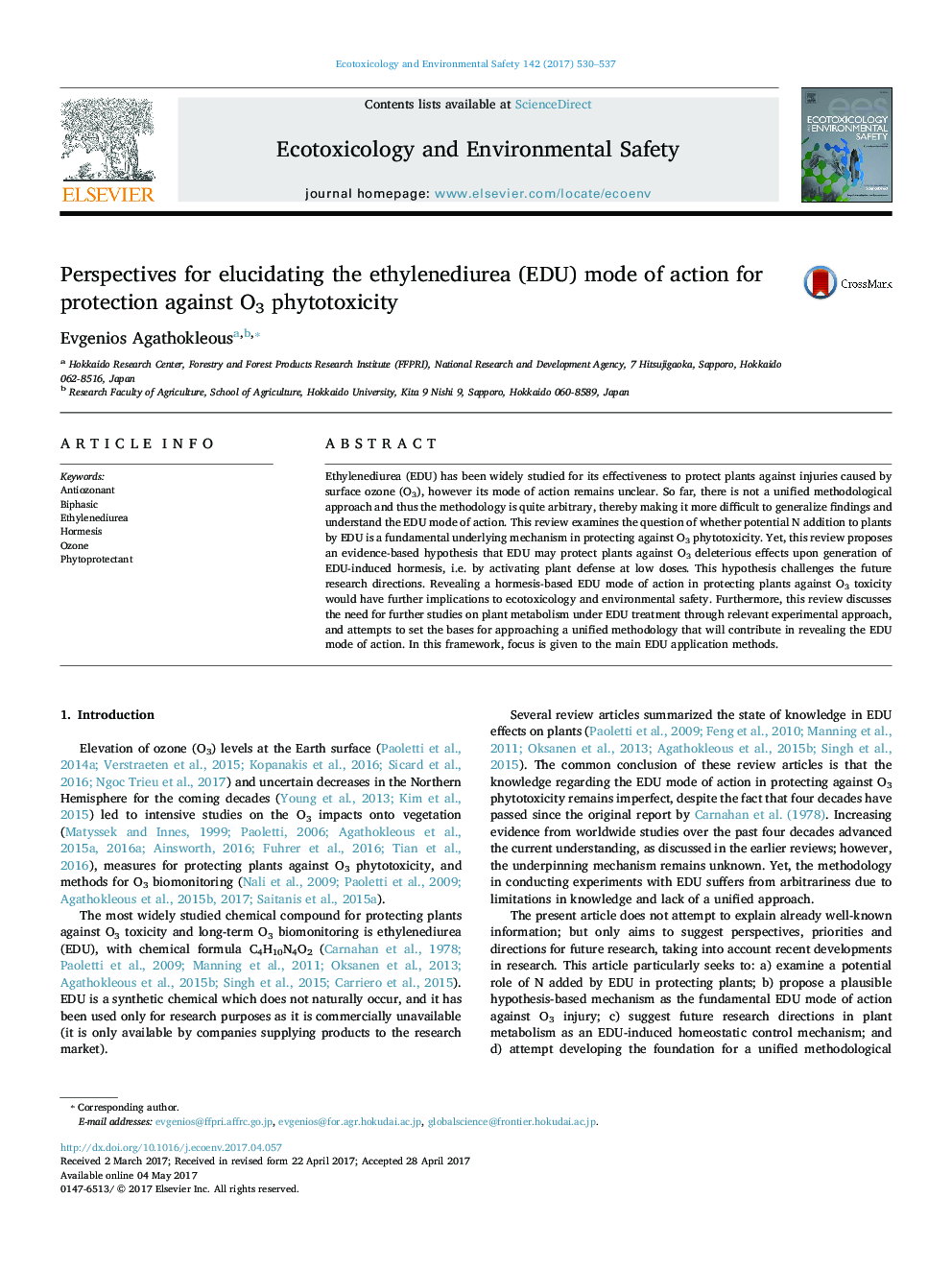| Article ID | Journal | Published Year | Pages | File Type |
|---|---|---|---|---|
| 5747659 | Ecotoxicology and Environmental Safety | 2017 | 8 Pages |
â¢Ethylenediurea (EDU) is a chemical compound that protects plants against O3 injury.â¢EDU mode of action in plants has not been revealed yet.â¢This article proposes a potential hormesis-based EDU mode of action.â¢Such a potential mode of action would have implications to environmental safety.
Ethylenediurea (EDU) has been widely studied for its effectiveness to protect plants against injuries caused by surface ozone (O3), however its mode of action remains unclear. So far, there is not a unified methodological approach and thus the methodology is quite arbitrary, thereby making it more difficult to generalize findings and understand the EDU mode of action. This review examines the question of whether potential N addition to plants by EDU is a fundamental underlying mechanism in protecting against O3 phytotoxicity. Yet, this review proposes an evidence-based hypothesis that EDU may protect plants against O3 deleterious effects upon generation of EDU-induced hormesis, i.e. by activating plant defense at low doses. This hypothesis challenges the future research directions. Revealing a hormesis-based EDU mode of action in protecting plants against O3 toxicity would have further implications to ecotoxicology and environmental safety. Furthermore, this review discusses the need for further studies on plant metabolism under EDU treatment through relevant experimental approach, and attempts to set the bases for approaching a unified methodology that will contribute in revealing the EDU mode of action. In this framework, focus is given to the main EDU application methods.
Graphical abstractDownload high-res image (274KB)Download full-size image
